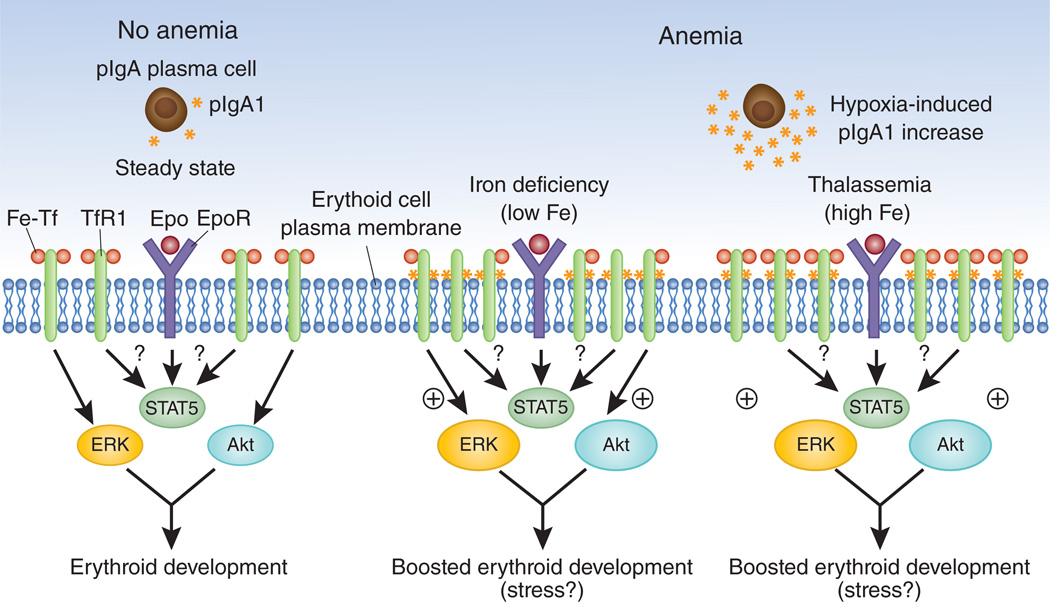Figure 1.
pIgA1 and Fe-Tf bind TfR1 to stimulate Epo-dependent erythroblast proliferation and development. Coulon et al.7 present a new model of erythropoiesis, which might allow the development of new therapeutic approaches for anemia and other disorders associated with dyserythropoiesis. Under steady-state conditions (left), low concentrations of pIgA1 are produced by plasma cells, and most TfR1 is bound by Fe-Tf, with little stimulation of downstream ERK and Akt signaling pathways. Stress conditions such as hypoxia can lead to increased pIgA1 production, allowing erythroid development to be boosted via ERK and Akt signaling. The role of pIgA1 becomes more important in iron deficiency anemia, where Tf saturation is low, limiting the ability of Fe-Tf to stimulate erythropoiesis.

